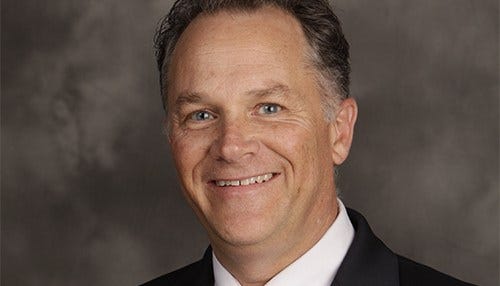Time For Movement on Transportation Infrastructure, Regional Transit

Subscriber Benefit
As a subscriber you can listen to articles at work, in the car, or while you work out. Subscribe Now"An object at rest stays at rest, an object in motion stays in motion." It’s a law of physics that also happens to apply to central Indiana’s economy: We depend on movement – moving people and products throughout the region, across the country and around the world.
When movement slows – when workers can’t reach jobs, when freight is delayed – commerce slows, too. The Indianapolis region is the most commuter-intensive in the state (workers moving into and among the nine counties for employment and residence), and as a major manufacturing and distribution hub we see billions of tons of raw materials and finished goods shipped to, from and through the metro every year.
So it’s no surprise that transportation is a priority issue for the Indy Chamber in 2016. A long-term trend of dwindling state gas tax revenues is putting future investment in infrastructure at risk.
Indianapolis has found creative ways to finance infrastructure (i.e. leveraging the proceeds from the city’s transfer of water and wastewater utilities to Citizens Energy Group), while suburban counties have mustered the fiscal wherewithal to fund their top priorities. But continued state and local spending is needed to support a transportation system that keeps up with population growth, helps businesses stay productive and maintains our logistics advantage.
There’s some support in the General Assembly for stopgap measures to fund the most urgent road and highway projects. But as Hoosier businesses expand, hire, and plan for a future in Indiana, they should demand a long-term solution to our infrastructure challenges.
The Indy Chamber believes that House Bill 1001 is the most comprehensive, forward-looking infrastructure proposal put forth this session. It increases the state gasoline tax by $0.04 while indexing it to inflation, for sustained investment in roads, bridges and other transportation needs.
But it’s a mistake to limit the transportation issue to finding better ways to build more highways. In his recent State of the State address, Governor Pence noted that "infrastructure is more than roads."
We agree: In Central Indiana, the demand for more public transportation options is just as important. We lack a robust transit system that reliably connects workers to jobs – across town or across county lines – or creates the kind of less car-reliant, walkable lifestyle that appeals to the younger skilled workforce.
The region is moving forward with plans for expanded transit service, including projects like the Red Line – a 35-mile regional bus rapid transit route that will run from Westfield and Carmel through Indianapolis to Greenwood, serving more than 100,000 residents and businesses that account for 20 percent of metro employment.
Bringing the region’s workforce and employers together gives the Red Line a healthy economic payoff. For fast-growing areas where businesses are scrambling to recruit new employees, the Red Line means wider access to a willing workforce. For high-poverty urban areas, it puts jobs and education within reach while attracting redevelopment opportunities. Looking ahead, this kind of rapid transit appeals to college-educated Millennial workers who identify transit as a key consideration when choosing where to live and work.
Local employers have consistently identified public transportation as a top concern, with strong support from policymakers and the public alike. After years of exhaustive study, outreach and legislative debate, the legislature finally authorized Central Indiana counties to put the issue to a vote through public referendum.
The Indy Chamber wants faster progress on transit, and a timely voice for those it would serve. We ask that townships contiguous to Marion County be allowed to put regional transit on the ballot in tandem with Indianapolis, for more efficient planning and implementation of new service across county lines.
The debates over transportation and transit are straightforward: Will we give our residents and employers long-term confidence in a competitive multi-modal transportation system with a realistic funding plan? Will we close the gap with other regions that recruit talent and investment by offering sought-after amenities like rapid transit?
Positive action will help keep our economy moving. But legislative gridlock will create congestion at the Crossroads of America, and risk employers and workers looking for the next exit.
Greg Fennig chairs the Indy Chamber’s Transportation, Infrastructure and Environment Council.
